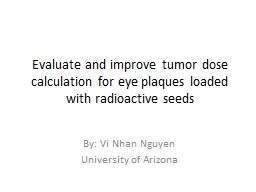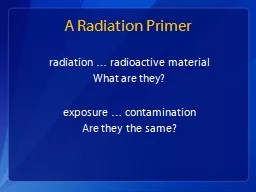PPT-Evaluate and improve tumor dose calculation for eye plaques loaded with radioactive seeds
Author : briana-ranney | Published Date : 2019-01-31
By Vi Nhan Nguyen University of Arizona Outlines Background Projects Objectives Calculate the dose distributions to the tumor and the eye Procedures Matlab code
Presentation Embed Code
Download Presentation
Download Presentation The PPT/PDF document "Evaluate and improve tumor dose calculat..." is the property of its rightful owner. Permission is granted to download and print the materials on this website for personal, non-commercial use only, and to display it on your personal computer provided you do not modify the materials and that you retain all copyright notices contained in the materials. By downloading content from our website, you accept the terms of this agreement.
Evaluate and improve tumor dose calculation for eye plaques loaded with radioactive seeds: Transcript
Download Rules Of Document
"Evaluate and improve tumor dose calculation for eye plaques loaded with radioactive seeds"The content belongs to its owner. You may download and print it for personal use, without modification, and keep all copyright notices. By downloading, you agree to these terms.
Related Documents














